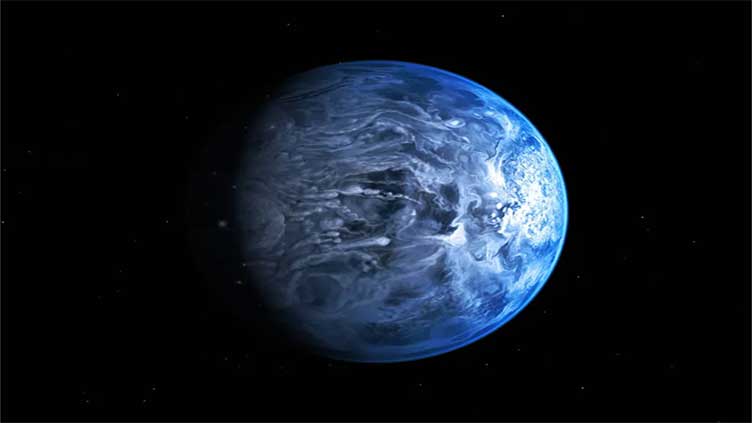Alien planet that rains glass with 5,400mph wind named 'nightmare world' by Nasa

Technology
A year on this planet is very different from one on Earth
(Web Desk) - A terrifying alien planet that "rains glass" lurks just 64.5 lightyears from Earth.
Described as a "nightmare world" by Nasa, the giant exoplanet has staggeringly fast winds that reach up to 5,400mph.
That's around seven times the speed of sound, Nasa explains.
It's called HD 189733 b, and is around 11% bigger than Jupiter.
From the outside, it looks like a bright blue planet – almost Earth-like – but that conceals the deadly conditions within.
Temperatures on the planet can range from 919C to 1,220C (1,686F to 2,220F), making it extremely hostile to life.
"The nightmare world of HD 189733 b is the killer you never see coming" Nasa explained.
"To the human eye, this far-off planet looks bright blue.
"But any space traveler confusing it with the friendly skies of Earth would be badly mistaken. The weather on this world is deadly."
On Earth, a year lasts 365 days as our planet whirls around the Sun – but it takes just 2.2 days for HD 189733 b to circle its own star.
Nasa describes it as a "turbulent alien world" due to its chaotic weather.
Part of that includes its deadly rain that would likely kill visitors that managed to survive the scorching temperatures and brutal winds.
"Getting caught in the rain on this planet is more than an inconvenience; it's death by a thousand cuts," Nasa said.
"This scorching alien world possibly rains glass – sideways – in its howling winds.
"The cobalt blue colour comes not from the reflection of a tropical ocean, as on Earth, but rather a hazy, blow-torched atmosphere containing high clouds laced with silicate particles."
Like Jupiter, HD 189733 b is a gas giant – and is classified as an "exoplanet", because it's outside our own Solar System.
The planet is so scary that Nasa created this mock horror movie poster inspired by its terrifying glassy rainCredit:
It's technically known as a "hot Jupiter" because of the short time it takes to orbit its star.
The planet races around the star at breakneck speeds of 341,000mph.
Being a "hot Jupiter" means it's a poor candidate for anyone trying to track down alien life – as well as for setting up a space base away from Earth.
The planet was first discovered in October 2005 by astronomers in France who were observing its star.
EXOPLANETS – EXPLAINED!
They spotted the planet by catching it "transit" across the face of the star.
It's located in Vulpecula, which is a faint constellation in the northern sky.
Keen skywatchers can spot Vulpecula by looking in the middle of the Summer Triangle.
But anyone with an interest can use an app like Night Sky to quickly track down the constellation using a smartphone.


